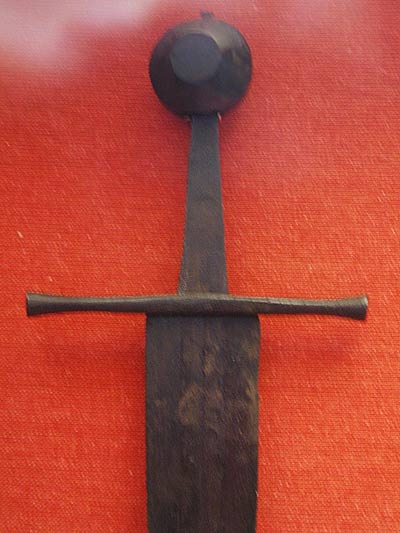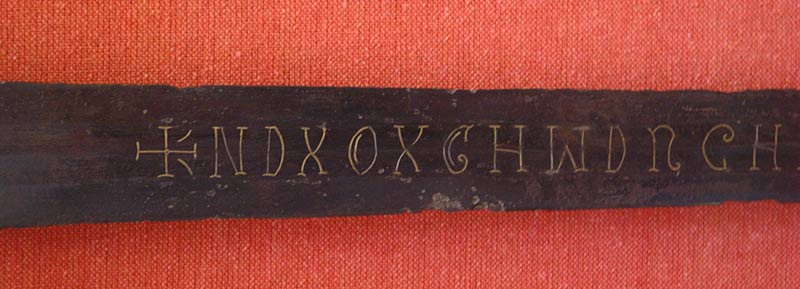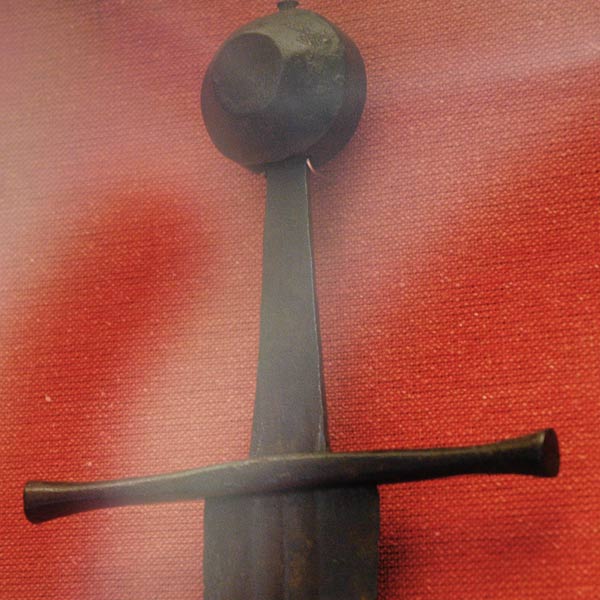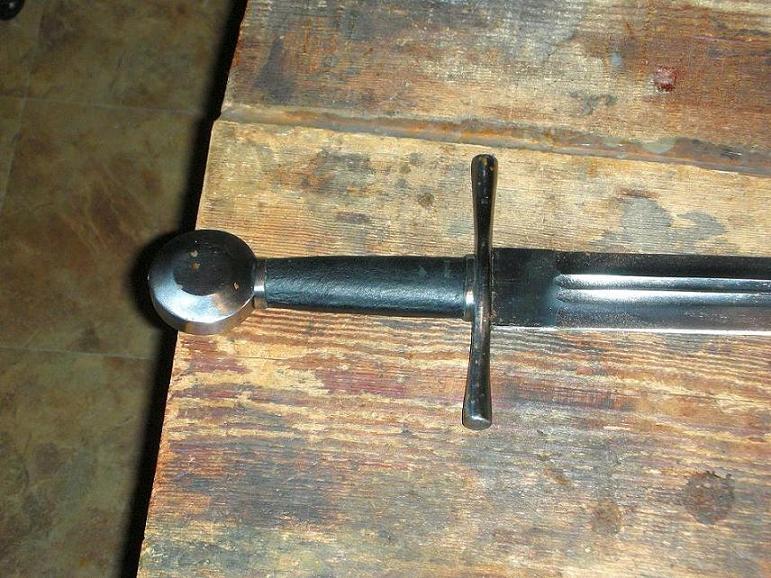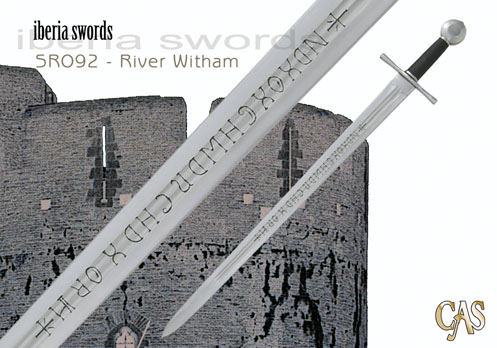I'm brand new around here. I've been intrigued by swords and armor for a while now, but it never advanced past the "just browsing" stage. It probably sprang from my fascination with Beowulf years ago in school, and continued with Tolkien. Anyway, last weekend I drove to Pennsylvania to attend the Renaissance Faire there. I got all dressed up in a borrowed outfit that vaguely resembled pirate garb. ( I actually borrowed it from my father, who is an avid 18th Century pre-Revolutionary America era reenactor and a very good gunsmith.) Once there, I browsed through the weapons and armor there, not really intending to buy anything, just there more out of curiosity. But I saw a sword there that called to me, and once I picked it up, I decided that I just had to buy it. It was probably the marking on the blade that did it. I know it's nothing of any great quality like some of the pieces of art on this site, but I love it anyway.
It is a reproduction of the River Witham sword with the runes etched in the blade. I'll try to attach a couple of pics so that everyone knows exactly which one I'm talking about, since there were apparently several found in the area. I've spent a few days trying to do a little research on it, and haven't been able to find much hard information. So, I'm hoping some of you will be able to help me. I'd like to know a little of the history about the sword such as:
Who would have carried it? (Viking, Norman, etc...)
What time period and area would it have come from?
Does anyone have any idea what the markings on the blade mean? ( I haven't been able to find a translation.)
Can someone direct me to a resource about how to care for this sword? (I've never owned a sword before.)
I appreciate any and all information you could give me or direct me to on this matter. I am just now taking an interest in the subject and don't really know where to begin.
Thanks in advance,
Ethan Tucker

A picture of the original.

A closeup of the markings on the blade of my reproduction.

